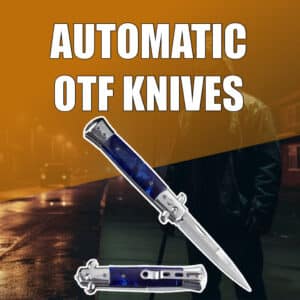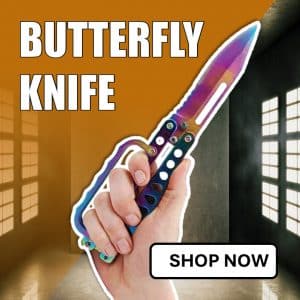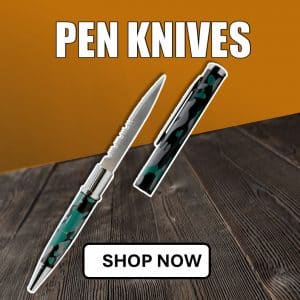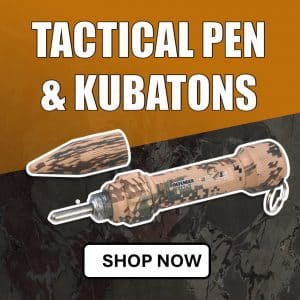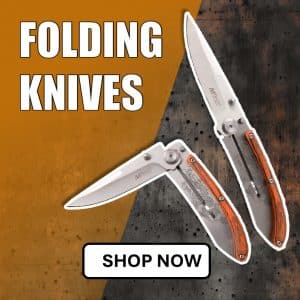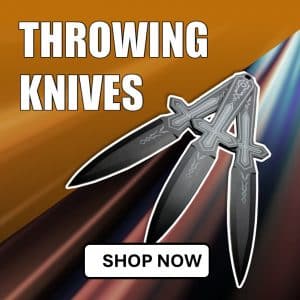Self-Defense Knives
Introduction
Welcome to Self Defense Mall's extensive collection of self-defense knives, where personal safety and protection are paramount. Our diverse range of knives, including automatic OTF knives, folding knives, and fixed blades, ensures you have the right tool for any self-defense situation.
Benefits of Self-Defense Knives
Enhanced Personal Safety
Equip yourself with a self-defense knife to significantly enhance your personal safety. These knives are designed to provide a reliable means of defense, allowing you to protect yourself in potentially dangerous situations. From deterring potential threats to creating a vital window for escape, self-defense knives empower you with the confidence and capability to safeguard yourself.
Versatility and Practicality
Our selection of self-defense knives covers a wide range of styles and designs to meet diverse needs. Whether you require a compact folding knife for everyday carry or a robust fixed blade for outdoor adventures, we have you covered. The practical features and ergonomic designs of our knives ensure ease of use and quick deployment, making them reliable tools in critical moments.
Peace of Mind and Deterrence
Carrying a self-defense knife acts as a deterrent, signaling to potential attackers that you are prepared and capable of defending yourself. This added sense of security instills peace of mind, allowing you to navigate various environments with greater confidence. Knowing you have a dependable self-defense tool within reach can make a substantial difference in your personal safety and well-being.
For detailed information and to explore our full range of self-defense knives, please click on the respective sub-categories.
Usage Guidelines
To effectively utilize self-defense knives, it is important to follow these usage guidelines:
Familiarize yourself with local laws: Before purchasing or carrying a self-defense knife, ensure you understand and comply with the laws and regulations in your area regarding the ownership and use of such products.
Proper grip and handling: Practice safe handling techniques and maintain a secure grip on the knife at all times to prevent accidents and ensure optimal control during use.
Regular maintenance: Keep your self-defense knife in good condition by cleaning and lubricating it regularly. This helps to maintain its functionality and extends its lifespan.
Training and practice: Acquire proper training in self-defense techniques and knife handling to maximize your effectiveness and minimize the risk of self-injury. Regular practice allows you to develop muscle memory and confidence in your skills.
Legal Considerations
Please note that while this guide aims to provide comprehensive and up-to-date information, it should not be considered legal advice. Laws regarding the possession, carrying, and use of self-defense products can vary greatly by location and are subject to change. It is essential to consult with local law enforcement or a legal professional in your area to understand the specific laws and regulations applicable to self-defense knives. Always ensure that your ownership, purchase, and use of self-defense products comply with all applicable laws.
Authorship and Expertise
Our Team of Self-Defense Experts
This comprehensive guide is prepared by a team of security professionals with extensive experience in personal safety and self-defense tactics. Our team consists of former law enforcement officers and personal safety trainers who possess practical experience and technical knowledge about self-defense knives. Their collective expertise ensures that the information and reviews presented in this guide are reliable, relevant, and of high quality.
Customer Support Information
At Self Defense Mall, we provide comprehensive customer assistance services. For any inquiries or support, reach out to us at support@selfdefensemall.com. Our dedicated team is available from Monday to Friday, between 9 AM to 5 PM EST. Additionally, you can find additional resources and information on our online portal to assist with your questions and concerns.
FAQs (Frequently Asked Questions)
Here are some common questions related to self-defense knives:
+Are self-defense knives legal to carry?
The legality of carrying self-defense knives varies depending on your location. It is crucial to familiarize yourself with local laws and regulations before carrying a self-defense knife.
+How do I choose the right self-defense knife for my needs?
Consider factors such as size, blade type, deployment mechanism, and intended use when selecting a self-defense knife. It's important to choose a knife that aligns with your skill level and comfort.
+Can I use a self-defense knife for purposes other than self-defense?
While self-defense knives are primarily designed for personal safety, they can also be used for various outdoor and utility tasks. However, it's essential to use them responsibly and within the boundaries of the law.
+How should I maintain my self-defense knife?
Regular cleaning, lubrication, and proper storage are essential for maintaining the performance and longevity of your self-defense knife. Refer to the manufacturer's guidelines for specific maintenance instructions.
Conclusion
Explore our wide selection of self-defense knives at Self Defense Mall and empower yourself with the tools necessary for personal safety. Our range of automatic, folding, and fixed-blade knives offers versatility, practicality, and peace of mind. Remember, personal safety is a priority, and choosing the right self-defense knife can make a significant difference. Take charge of your safety today and browse our product catalog to find the perfect self-defense knife for your needs.



